Red Fox Activity
From the outset it must be noted that it is incredibly difficult to generalise about the behaviour of any animal -- there will always be exceptions to the "rules". This seems particularly true of fox activity, which varies according to a whole host of factors, including the individual, sex, age, season, habitat, and weather. Indeed, one study of Japanese foxes, published in the Japanese Journal of Ecology during 1980, noted how:
"Day to day variations are rather common and large even for the same individual."
Foxes are active throughout the year and do not hibernate. They're predominantly nocturnal, with a tendency towards crepuscularity (i.e., peaks of activity around dusk and dawn) and, although diurnal (daytime) activity is common in some areas, foxes typically spend the day resting in cover. Indeed, during a 1986 study of fox activity in central Spain, Juan Carlos Blanco found that foxes rarely moved far during the daytime: of 176 radio-fixes of a dog fox from 2.5 hours after sunrise until sunset, 95% showed it to be inactive. That said, in certain regions -- most notably urban areas -- diurnal activity is more common than many people realise.
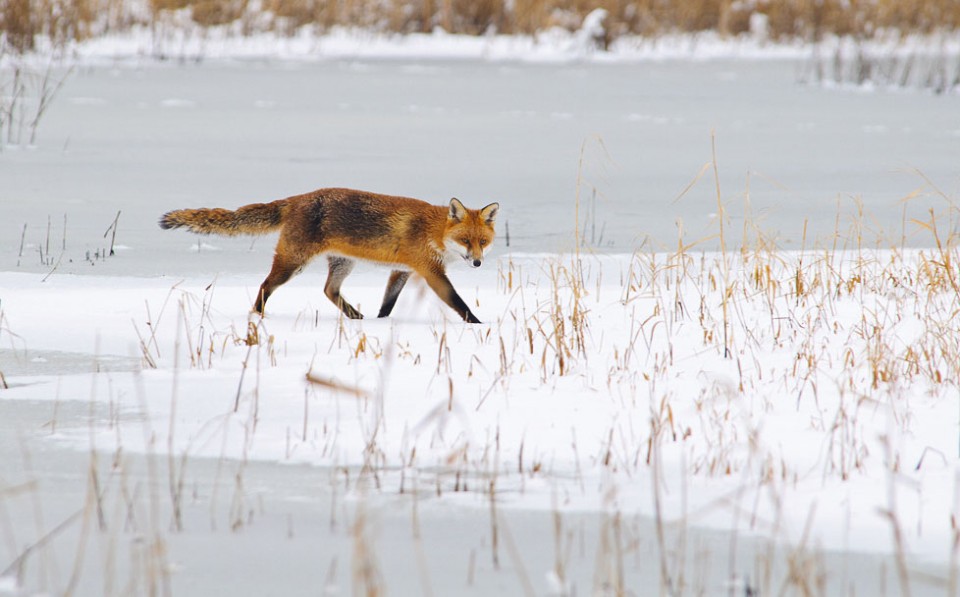
People often seem surprised to come across a fox out-and-about in broad daylight, but I have watched foxes hunt during the late morning in rural locations, take one of our ducks at lunchtime on a weekday, and stroll around a busy industrial site in the middle of the afternoon; one even invaded the Twickenham rugby pitch at 14:55 on 13th March 2011 in front of 82,000 fans just before England played Wales in the Six Nations. It has been suggested that the level of diurnal activity among foxes is associated with the level of persecution and, in his 1950 book Wild Animals in Britain, Oliver Pike wrote:
"The fox is now a nocturnal hunter; but this is probably a habit forced upon it by continual persecution. The foxes that lived in Britain in the long distant past searched for their food by day, and we often see them falling back to this habit [where there is little or no persecution]."
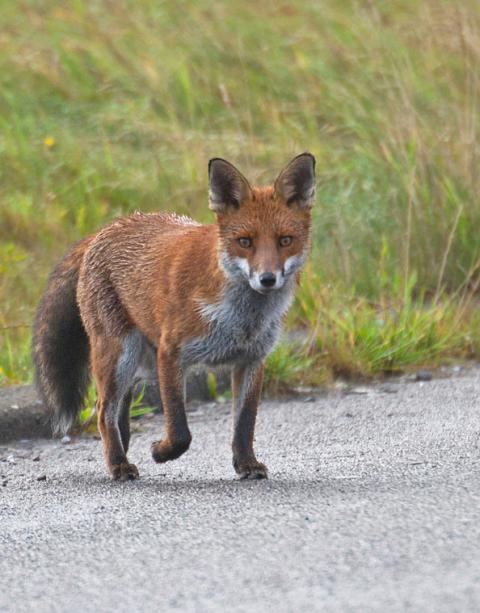
I suspect that there is more to the fox's penchant for nocturnality than human disturbance but persecution does, nonetheless, have a role to play. Studies on several mammal species -- including European badgers (Meles meles), coyotes (Canis latrans), and bat-eared foxes (Otocyon megalotis) -- have shown that persecution by humans causes the animals to become more nocturnal, sometimes reverting to more daytime activity if the persecution is stopped.
Research on foxes in Japan's Kumamoto Prefecture during the 1970s found that one of their study animals had conspicuous nocturnal activity throughout the year. This dog fox had a territory encompassing many villages and roads carrying heavy traffic and the researchers observed that human disturbance triggered many daytime movements of the foxes; being driven away from resting sites by farm workers and, in one case, chased by a pack of feral dogs. In their 1980 paper, the authors concluded that: "frequent passages of men and motor-cars suppresses the activity of the fox." Similarly, a study of foxes in Italy's Maremma Natural Park found that the animals used areas under human management mainly at night, with almost 86% of their activity being nocturnal. In Bristol, Phil Baker and his colleagues observed that the city's foxes appeared to have adapted to traffic flow within the city. In a 2007 paper to the journal Behavioral Ecology, the researchers described how foxes were more likely to cross roads after midnight, when traffic was at its lowest, and that adults were generally much less likely to cross roads than juveniles. This behaviour appeared to reduce mortality on minor roads within the city; but foxes were still vulnerable to major roads when venturing outside their territories.
More recently, a study of Red fox activity in 12 localities in central Spain led by Francisco Díaz-Ruiz at the Universidade do Porto in Portugal found that although foxes were more active where rabbits were most abundant, they decreased their activity in areas closer to human settlements, particularly during twilight and at night. Activity was further depressed in areas with high levels of fox control (culling). In their paper to the Journal of Zoology in 2016, Díaz-Ruiz and his colleagues concluded:
"... rabbit availability seems to drive fox activity in a scenario of low human disturbance, and foxes actively track rabbits at twilight and night time. However, where foxes are close to urbanized areas or culled, human disturbance may determine the activity of red foxes, which is strongly reduced during daytime, despite the higher accessibility of rabbits then."
My own observations suggest that something similar operates among Red foxes - I've found that foxes are considerably more difficult to find during the daytime in rural areas where they are heavily controlled by farmers or gamekeepers. It is important to recognise, however, that this is a supremely adaptable species whose behavioural flexibility has allowed them to flourish in almost every ecosystem on Earth. Consequently, they can respond rapidly to changes in our activity and the disturbance it brings; the COVID-19 coronavirus pandemic that swept much of the world in late 2019 and the first half of 2020 hinted at just such a change.
The arrival of the virus to Britain in March saw a state of "partial lockdown" initiated by the government, during which all non-essential activities were banned and all bars, pubs, restaurants, entertainment venues as well as most shops, factories and offices were closed. People were told to remain in their houses and work from home, avoiding all non-essential travel. The result was a drastic reduction in human activity in even major towns and cities and a coincidental increase in reports of some wildlife on social media. We cannot say for certain whether less human disturbance caused a rapid change in fox behaviour, but several key workers (e.g., police, postal workers, etc.) reported seeing more on the streets during the quarantine. Dawn Scott at Keele University in Staffordshire began a research project to look at this in greater detail during April 2020, the data from which have yet to be published, but one study from Berlin, published in the Journal of Animal Ecology during 2022, found that increased use of gardens by people during lockdown caused foxes to use them less during the day.
Various tracking studies have revealed that the bulk of a fox's activity occurs during the night, with most activity starting just after sunset and ceasing in the hour prior to sunrise. On longer autumn and winter nights, it seems that the fox has more time to complete its business and, consequently, there is often a period of rest (ranging from about 20 minutes to three hours) around midnight during these seasons; most studies have shown either bimodal or trimodal activity cycles (i.e., two or three peaks in activity per night). Both juveniles and adults show increased levels of activity during the autumn; the former often travelling further on exploratory trips prior to dispersal and the latter feeding up in preparation for the breeding season. During the winter, adults are very active as they move around in search of mates - males will often undertake considerable movements outside of their territory looking for receptive vixens.
During his studies on captive foxes in the 1950s, German ethologist Günter Tembrock recorded an activity peak of 12 hours per day during pre- and early-breeding season, dropping to seven hours per day in April and remaining there for the remainder of the year. During autumn and winter Tembrock noted little daytime activity but found a large peak in activity at dusk, falling during the night towards dawn. Tembrock observed that activity was more evenly spread throughout 24 hours between February and March, after which daytime activity reduced and nocturnal activity occurred in three peaks, punctuated by brief periods of rest.
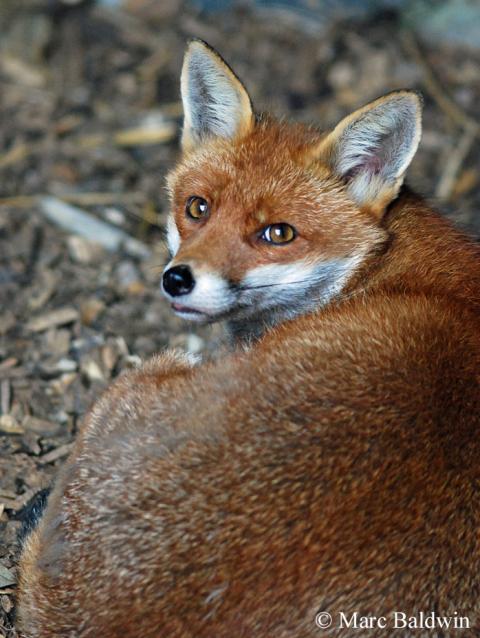
During his studies on foxes in west Gloucestershire, Roger Burrows found something similar; he noted how activity was spread over the whole 24 hour period during January, with movement apparently being more important than feeding at this time. Burrows did, nonetheless, document more daytime activity during December (nocturnal movements being more sporadic) and observed less daytime activity during February (most activity being between about 18:00 and 20:00), increasing during March and April. Burrows also noted that foxes took more direct routes (across the middle of open fields that they skirted the edge of during winter) more often during May, which he considered was probably a response to higher vegetation providing better cover.
A recent study by researchers at Brighton University tracked a male fox 315 km (195 miles) in almost a month (early December 2013 to early January 2014) and observed that most of this travelling was done at night, with the fox slowing down between 05:00 and 06:00 to look for somewhere (generally a suburban garden) to rest up for the day. This former suburban dog fox appeared to navigate along roads and railway lines, occasionally swimming across rivers having walked up and down the bank looking for a good place to cross.
During the early 1980s, much was learnt about the activity patterns and movements of urban foxes in Britain. Between October 1980 and January 1983, Oxford University zoologists Patrick Doncaster and David Macdonald radio-tracked 17 adult foxes living in Oxford city; the results of the study were published in the Journal of Zoology during 1997. The biologists found that the foxes were largely inactive by day (and often rested during part of the night) and, for all foxes, the first prolonged activity began, on average, 30 minutes after sunset and ended 15 minutes before dawn - the day of the week wasn't found to alter the activity pattern. The average time spent active (when lactating vixens were excluded - see below) was just under seven hours per night, with no noticeable difference between dogs and vixens. The overall time spent active per night didn't change seasonally.
Where the foxes chose to go on any given night was loosely dependent on where they had been the previous night, although they generally used less than half of their home range on any one night. Overall, the researchers found that the number of resting periods increased as winter approached; during winter and spring the night was typically divided into several short periods of activity (2-2.5 hours each) interspersed with similar periods of rest, very similar to those recorded in Bristol's urban foxes, which were active for about eight hours per night. In the Jura Mountains in Switzerland, Jean-Marc Weber and colleagues found that mean active periods of seven vixens varied considerably with season, from about 400 to 800 minutes (6.5-13 hours), with rest periods of 100-300 minutes (1.5-5 hours), although, in their 1994 paper to Zeitschrift für Säugetierkunde, the researchers point out that the activity periods were usually interrupted by brief resting periods lasting 15 minutes or less. Doncaster and Macdonald suggest that this difference is related to food: urban foxes live in a food-rich habitat, with clumped resources, meaning they don't need to search as far or for as long to find sufficient food as foxes in mountainous regions. Likewise, Weber and his co-workers mention that food availability and hunting by humans were influencing factors in the activity of their subjects.
The length of time taken to find food is not the only factor that influences activity - the activity of the prey can also be a factor. During their study on foxes in Tuscany, central Italy, Paolo Cavallini and Sandro Lovari found that foxes were more diurnal when feeding on diurnal grasshoppers. In other words, how active the foxes were during daylight depended on how much of their food was active during the day. Similarly, in Britain, it is fairly common to see foxes hunting diurnally on very cold days when voles are more active, while the combination of cold and wet may reduce activity. Weber and his team also recorded an increase in activity during very cold weather in their Swiss vixens.
The influence of parenthood
The activity of breeding vixens is substantially reduced during March and early April and females with cubs are significantly less active than non-breeding animals. In the days leading up to parturition, the vixen will restrict herself to the earth and will not leave the cubs during the first 48 hours. Once the cubs are a couple of days old, the vixen will leave to drink and as the cubs grow the vixen's activity away from the earth increases (she will move further away and stay away for longer). Not only are vixens less active while rearing cubs, they also travel shorter distances. Indeed, a tracking study of foxes in the Ashio Mountains of central Japan, between November 1988 and September 1989, showed a vixen decreased her home range by almost 50% while she had dependent cubs, increasing it again once the cubs were above ground.
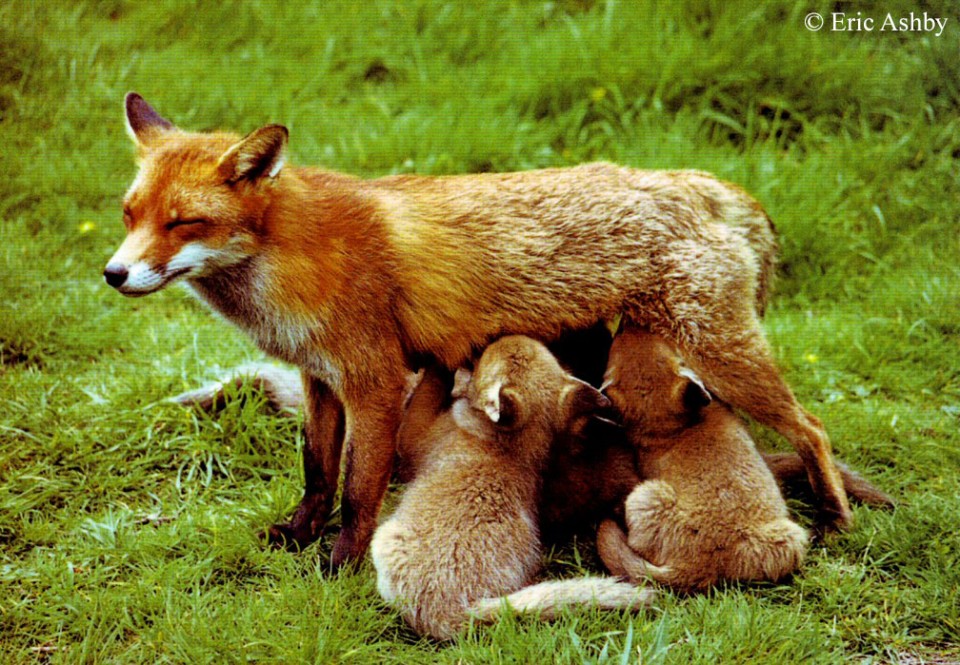
The researchers continuously recorded the vixen's activity for a 60 hour period during mid-April and found that she stayed in the den for more than 80% of the time, making only 14 trips out (only five of which exceeded an hour, most being only a few minutes). Unfortunately, this study only tracked a single vixen, so it is difficult to draw many conclusions, although several other studies have yielded similar results. One study on foxes kept on a fur farm observed that vixens spent about 70% of their time in their nest boxes in the 24 hours leading up to giving birth, and most did not leave the box for the first 12 to 15 hours after the cubs were born; one female remained holed up for 27 hours after birth. When they did go outside, cubs were left for no more than about 10 minutes.
In a study of foxes living in the Kumamoto Prefecture of Japan during the 1970s, Kazuhiro Eguchi and Toshiyuki Nakazono found that, although vixens nursing cubs were active both day and night, the total distance that they travelled during the day was short. Likewise, during their Oxford study, Doncaster and Macdonald found lactating vixens spent, on average, only four hours per night active and moving substantially shorter distances than non-lactating animals (although the authors don't state precisely how far); non-lactating animals moved an average of 4.5 km (3 miles) per night, covering an area of almost 18 hectares (ca. one-14th sq. mile).
Growing up
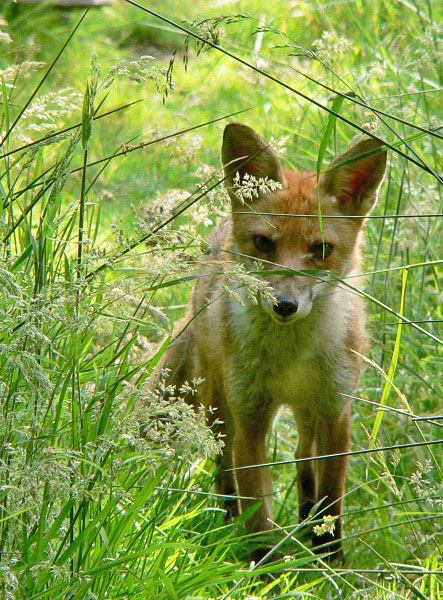
It's not only adult foxes that undergo seasonal changes in their activity patterns - cubs do too. Indeed, in his 1994 book Wild Guide, Simon King notes that mid-to-late May is the best time for fox-watching because daytime activity of adults (with hungry cubs to feed) and cubs is at its peak. King describes how cubs become increasingly crepuscular/nocturnal (and more nervous of humans) by June or early July, an observation that Roger Burrows also made, in his Wild Fox book. Indeed, Burrows frequently observed cubs playing above ground during May, getting progressively more nocturnal (seldom out before dusk in June) as they began wandering around by themselves.
A tracking study of fox cubs in Bristol between 1991 and 1993 revealed that cubs began using more lying-up sites away from the main earth from June onwards such that, as the summer progressed, the cubs became more scattered, spending less time at the earth, and were less likely to lay-up in groups. By August the cubs were more active around the territory, moving over areas of a similar size to that of their parents. Overall, between May and August the cubs increased the area over which they moved by seven-fold, with most activity centred around secure rendezvous sites located in dense vegetation. Cubs are active for roughly the same, or slightly longer, periods as their parents.
Essentially, how far the fox travels is determined by two main factors: season (which affects food availability and distribution along with breeding) and habitat (which also affects food as well as disturbance). Weather conditions can significantly influence the times a fox is active and, while tracking the foxes of Cedar Creek in Minnesota, Alan Sargeant found that they switched from nocturnal to diurnal feeding when snow cover was very thick (in some cases, exceeding 1m / 3ft).
Run Run Reynard
Finally, much is made of the speed that foxes move around their territory. Foxes exhibit a loose-limbed trotting isochronous/ambling gait (i.e., the foot falls are equal beats in a 1-2-3-4 rhythm, rather than the 1-2, 3-4 that we see in, for example, deer) that is very energy efficient, allowing them to cover long distances in a single night; this trot has an average stride of 33-38cm (12-15 in.) for an adult fox. Doncaster and Macdonald found that their Oxford urban foxes travelled at, on average 0.6 kmph/0.4 mph (roughly 10m or 33ft per minute); a similar study in Bristol found that speed of movement varied considerably with habitat, but was as high as 2 kmph/1.2 mph.
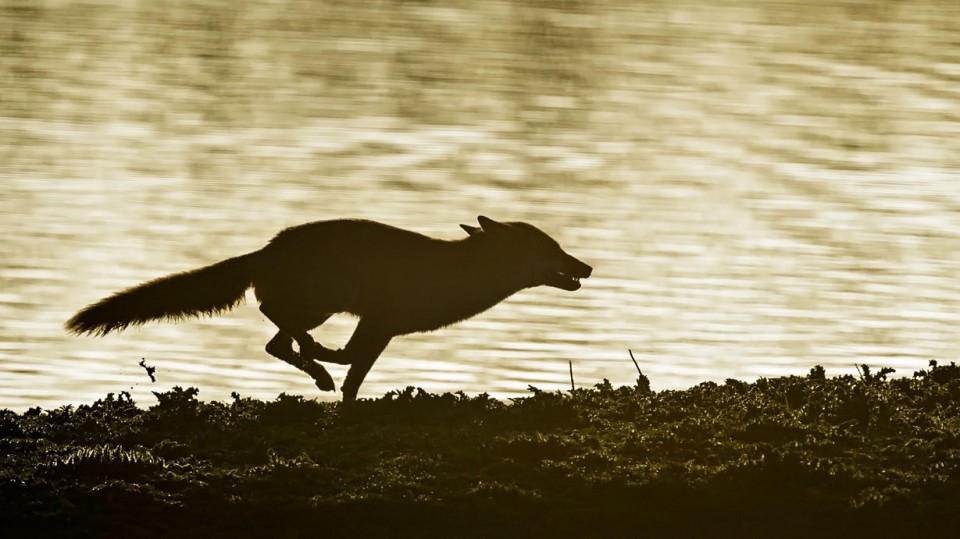
In their contribution to Mammals of the British Isles, Stephen Harris and Phil Baker note that, when moving un-hurriedly at a slow trot, foxes attain 6-13 kmph (4-8 mph), while considerably faster speeds have been reported for fleeing foxes. During their study of foxes in Kyushua (Japan), Eguchi and Nakazono observed the normal walking (trotting) speed to be about 7 kmph/4.4 mph, although they note that the average speed is much lower than this because the fox engages in various activities (prey searching, hunting, sniffing, etc.) while moving around. In a 1968 paper to the journal Saugetierkunde Mitteilungen, German mammologist Theodor Haltenorth and Italian FAO biologist H. Roth reported a top speed of 48 kmph (30 mph) and a maximum vertical jumping height from standing of 2m (7ft) for Red foxes. Burrows noted how, when in a hurry, a fox gallops along at up to 56 kmph (35 mph), while Huw Lloyd, in his The Red Fox, noted something similar:
"I am uncertain of the top speed of the fox. I have followed one along a road at just over 48km per hour, but it is commonly held that the fox is capable of over 65km per hour [40 mph]."
In North of Monadnock, Newton Tolman wrote of having clocked a fox at 71 kmph (44 mph), keeping pace with his Jeep down a hill in New Hampshire, and, in his review of how animals run, published in Scientific American during May 1960, zoologist Milton Hildebrand gave the top speed of the Red fox as 72 kmph (45 mph), noting how one animal running ahead of hounds covered 150 miles (240 km) in half a day - at a sustained pace, that would suggest at least 40 kmph (25 mph).
The fastest reported speed I've come across so far was given, based largely it appears on the comparative morphology with other fast running animals, as 72 kmph (45 mph) by Edward Gilbert and Thelma Brown in their book K-9 Structure & Terminology. There are several other reports of foxes running very fast, but that remain unquantified, including one by Leonard Lee Rue who, in his 1969 book The World of the Fox, described a fox that "ran so fast it appeared to flow downhill and across the flat", overtaking and outdistancing a deer being hunted.
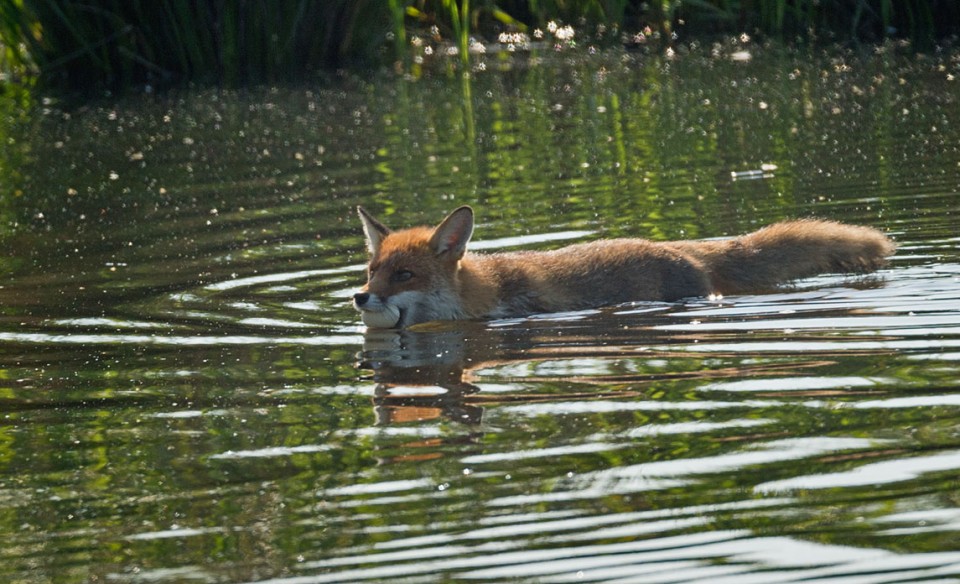
Harris and Baker suggest, however, that the oft-cited top speed of 65 kmph is probably unrealistic, putting them just shy of the top speed typically reported in greyhounds (45 mph, bar one Australian dog that apparently topped 84 mph.). Nonetheless, there remain credible examples of foxes reaching at least 65 kmph and Gray foxes (Urocyon cinereoargenteus) have apparently been clocked at 68 kmph (42 mph) so it should perhaps not be a surprise to find the Red fox attaining similar speeds.